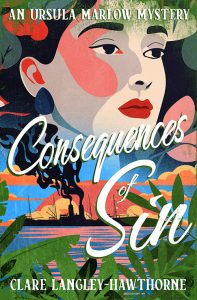I have just read a fascinating article about a murder case in Edwardian England in which a woman named Kitty Byron stabbed her loved (Alfred Baker) on the steps of their local post office. She stabbed him after an altercation over whether he could pay two pence to help her send a telegram but what really caught my eye was how the case revolved not around who murdered Baker (as this was not denied) but why and how the case stirred up public sympathy for the plight of a poor jilted woman. Apparently, Baker (who was married) had been cohabiting with Kitty and was threatening to leave her when the murder took place. Kitty managed to garner public sympathy because unlike her middle-class lover (who was the son of a stockbroker) she was the daughter of a brewer and poor. Their relationship was marked by violence and alcohol and Kitty was portrayed as more sinner against than sinner despite the fact that prior to her relationship with Baker Kitty had romantic relationships with both men and women.

Kitty’s barrister was none other than Henry Dickens (son of Charles) and members of Stock Exchange actually funded her defense – evidence again of the compassion and pity Kitty’s case had stirred. The article argued that in this case gender played a major role in determining the outcome – for thousands of people signed a petition asking for clemency and the judge followed the jury’s recommendations for mercy (though Kitty was found guilty of murder). Kitty served seven years in jail – had she been a man no doubt she would have hanged for her crime – but this case served to pave the way for considerations such as provocation and the mental state of the perpetrator. It also makes for a fascinating study in Edwardian sensibilities and way of life.
BTW the citation for the article is: Frost G. ‘She is but a woman’: Kitty Byron and the English Edwardian Criminal Justice System. Gender & History. 2004; 16(3):538-560. Unfortunately, I don’t think it’s freely available on the web – I found it in my research using the JSTOR database.



